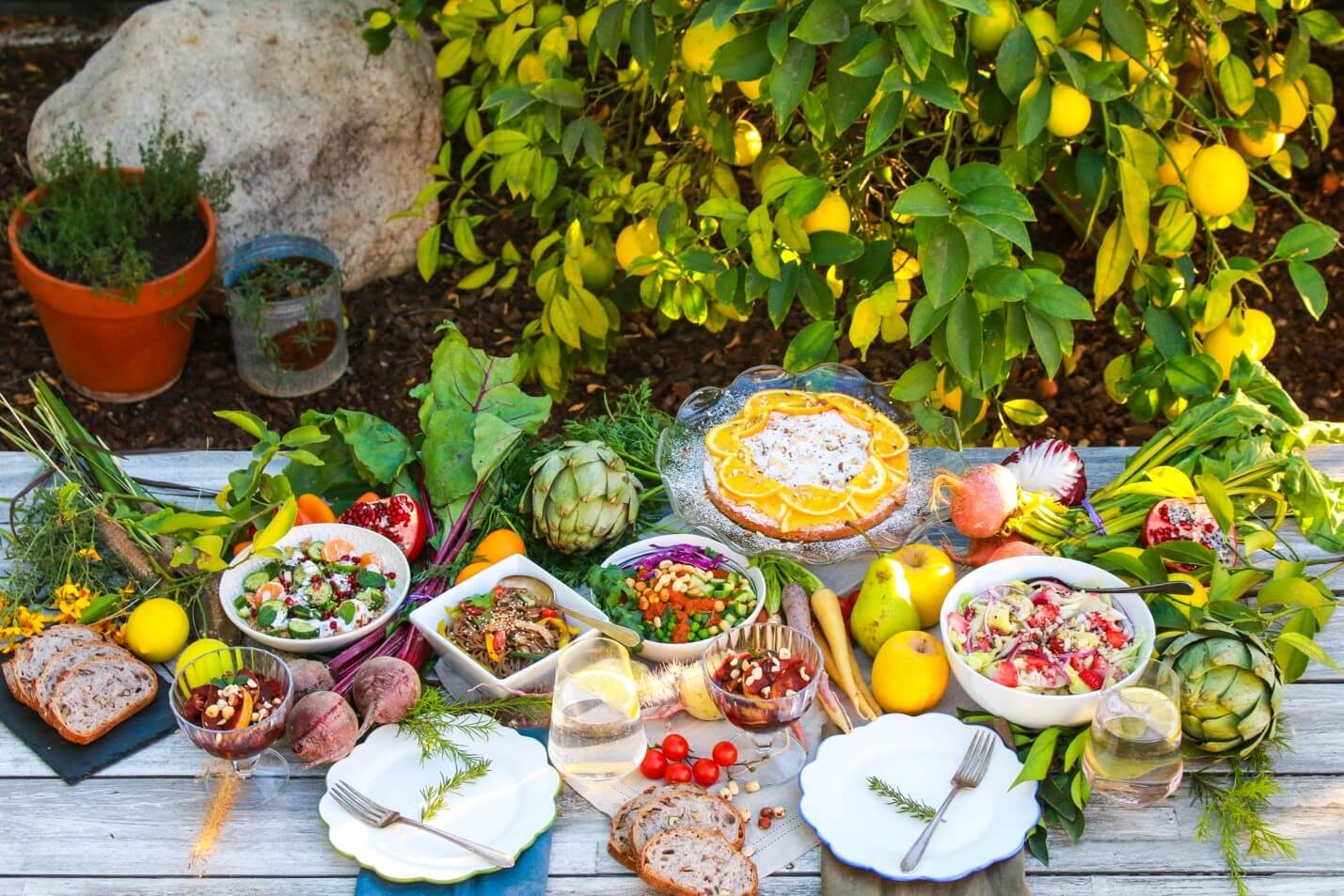Overview
The transition to a plant-based diet can be both an exciting and challenging journey. The world of plant-based cooking offers a plethora of flavors, textures, and nutritional benefits. This comprehensive guide will introduce you to essential cooking techniques that will help you master the art of plant-based cuisine. Whether you are a novice in the kitchen or looking to expand your culinary skills, these tips and methods will set you on the path to delicious and nutritious plant-based meals.
Understanding Plant-Based Ingredients
Before diving into cooking techniques, it is crucial to familiarize yourself with plant-based ingredients. These ingredients form the foundation of your meals and include a variety of fruits, vegetables, grains, legumes, nuts, seeds, and plant-based proteins such as tofu, tempeh, and seitan.
Selecting Fresh Produce
The quality of your dishes heavily depends on the freshness of your ingredients. When selecting fruits and vegetables, look for vibrant colors, firm textures, and a fragrant aroma. Organic produce is preferable to avoid pesticides and ensure the highest nutritional value.
Grains and Legumes
Grains and legumes are staple components of a plant-based diet. Brown rice, quinoa, barley, lentils, chickpeas, and black beans are just a few examples. These ingredients are rich in fiber, protein, and essential vitamins and minerals.
Plant-Based Proteins
Tofu, tempeh, and seitan are excellent sources of protein. Tofu, made from soybeans, has a neutral flavor and can be marinated to enhance its taste. Tempeh, also made from soybeans, has a nutty flavor and a firm texture. Seitan, made from wheat gluten, is often used as a meat substitute due to its chewy texture.
Essential Cooking Techniques for Plant-Based Meals
Mastering a few key cooking techniques can significantly elevate your plant-based dishes. Here are some essential methods:
Sautéing
Sautéing is a fundamental technique that involves cooking ingredients quickly in a small amount of oil over medium-high heat. This method is perfect for cooking vegetables, tofu, and tempeh. To sauté effectively:
- Preheat your pan: Ensure your pan is hot before adding oil.
- Use the right oil: Choose oils with high smoke points like avocado or grapeseed oil.
- Cut ingredients uniformly: This ensures even cooking.
- Stir frequently: Prevents sticking and promotes even browning.
Steaming
Steaming is a gentle cooking method that preserves the nutrients and color of vegetables. It is an excellent technique for preparing a variety of vegetables and grains. To steam properly:
- Use a steamer basket: Place it over boiling water without submerging the vegetables.
- Cover the pot: This traps steam and cooks the vegetables evenly.
- Monitor cooking time: Over-steaming can lead to mushy vegetables.
Roasting
Roasting enhances the natural flavors of vegetables and plant-based proteins through caramelization. It is ideal for root vegetables, squashes, and cauliflower. To achieve perfect roasting:
- Preheat the oven: Set it to a high temperature, around 400°F (200°C).
- Use parchment paper: Prevents sticking and makes cleanup easier.
- Season generously: Use herbs, spices, and a drizzle of oil.
- Toss midway: Ensures even browning on all sides.
Grilling
Grilling imparts a smoky flavor to vegetables and plant-based proteins, making it a popular method during warmer months. To grill effectively:
- Preheat the grill: Ensure it is hot before placing food on it.
- Use a grill basket: Prevents small pieces from falling through.
- Marinate: Adds flavor and moisture.
- Monitor closely: Avoids burning and overcooking.
Blending and Pureeing
Blending and pureeing are crucial for creating smooth soups, sauces, and dips. High-speed blenders or food processors are ideal tools. Key tips include:
- Start slow: Gradually increase speed to prevent splattering.
- Add liquid as needed: Ensures smooth consistency.
- Season gradually: Taste and adjust seasoning during blending.
Flavor Enhancements
Flavor is paramount in plant-based cooking. Here are ways to enhance the taste of your dishes:
Herbs and Spices
Herbs and spices are the backbone of flavor in plant-based cuisine. Fresh herbs like basil, cilantro, and parsley add brightness, while dried spices such as cumin, paprika, and turmeric provide depth.
Aromatics
Onions, garlic, ginger, and chili peppers are essential aromatics that build a flavor base for many dishes. Sauté them at the beginning of cooking to release their flavors.
Acid and Umami
Balancing flavors with acid and umami is crucial. Vinegars, citrus juices, soy sauce, and miso paste can transform a dish from bland to extraordinary.
Nutritional Yeast
Nutritional yeast adds a cheesy, nutty flavor to plant-based dishes. It is particularly useful in sauces, dressings, and as a topping for popcorn or pasta.
Simple Plant-Based Recipes for Beginners
Here are a few easy recipes to get you started on your plant-based cooking journey:
Sautéed Vegetables and Tofu Stir-Fry
Ingredients:
- 1 block of firm tofu, cubed
- 2 cups broccoli florets
- 1 bell pepper, sliced
- 1 carrot, julienned
- 2 tablespoons soy sauce
- 1 tablespoon sesame oil
- 2 cloves garlic, minced
- 1 teaspoon ginger, minced
Instructions:
- Heat sesame oil in a large pan over medium-high heat.
- Add tofu and sauté until golden brown. Remove and set aside.
- In the same pan, add garlic and ginger, sauté until fragrant.
- Add vegetables and sauté until tender-crisp.
- Return tofu to the pan, add soy sauce, and stir to combine.
- Serve hot with rice or noodles.
Roasted Chickpeas
Ingredients:
- 1 can chickpeas, drained and rinsed
- 1 tablespoon olive oil
- 1 teaspoon paprika
- 1 teaspoon garlic powder
- Salt and pepper to taste
Instructions:
- Preheat oven to 400°F (200°C).
- Toss chickpeas with olive oil and spices.
- Spread on a baking sheet in a single layer.
- Roast for 20-25 minutes, shaking the pan halfway through.
- Enjoy as a snack or salad topping.
Creamy Avocado Pasta
Ingredients:
- 12 oz whole-grain pasta
- 2 ripe avocados
- 1/4 cup olive oil
- 2 cloves garlic
- 1/4 cup fresh basil
- 1 tablespoon lemon juice
- Salt and pepper to taste
Instructions:
- Cook pasta according to package instructions.
- In a blender, combine avocados, olive oil, garlic, basil, lemon juice, salt, and pepper. Blend until smooth.
- Toss the sauce with the cooked pasta.
- Serve immediately, garnished with extra basil and lemon zest.
Conclusion
Embracing plant-based cooking can be a fulfilling and rewarding experience. By mastering essential cooking techniques and exploring diverse ingredients, you can create delicious, nutritious, and satisfying meals. Whether you are looking to improve your health, protect the environment, or simply enjoy the culinary adventure, plant-based cooking offers endless possibilities. Start experimenting today and discover the vibrant world of plant-based cuisine.

